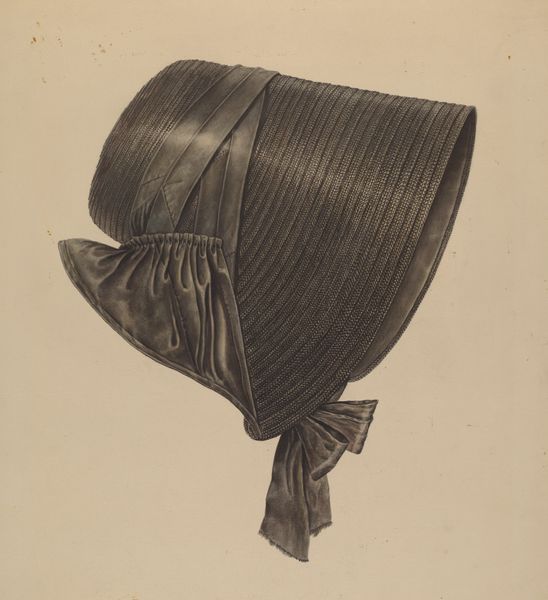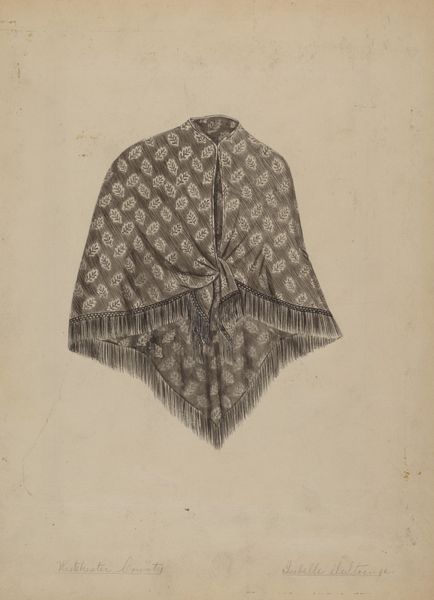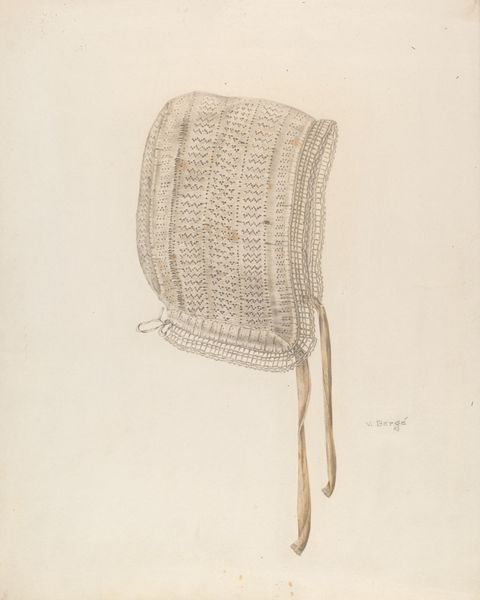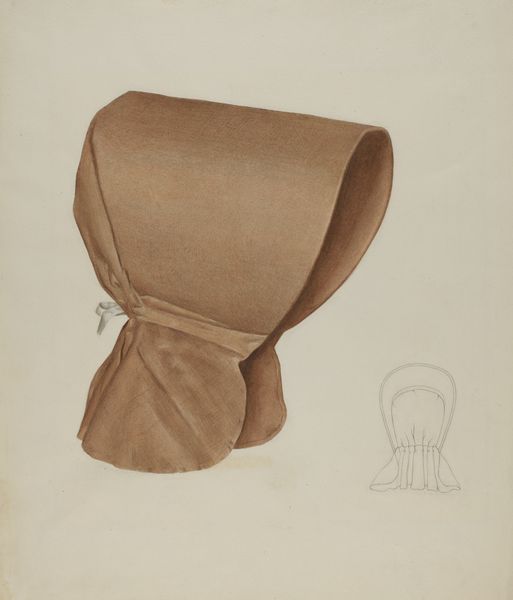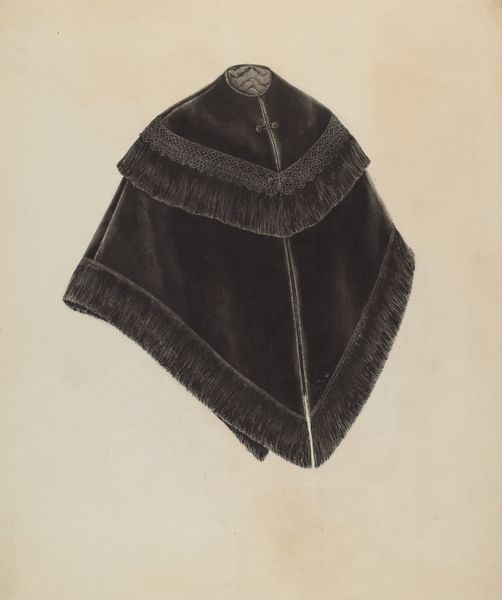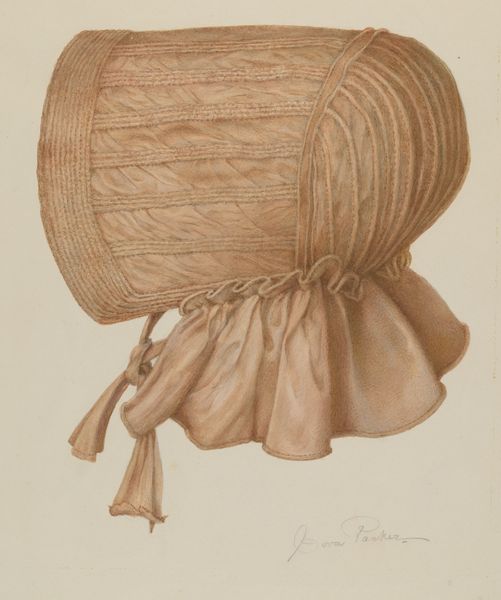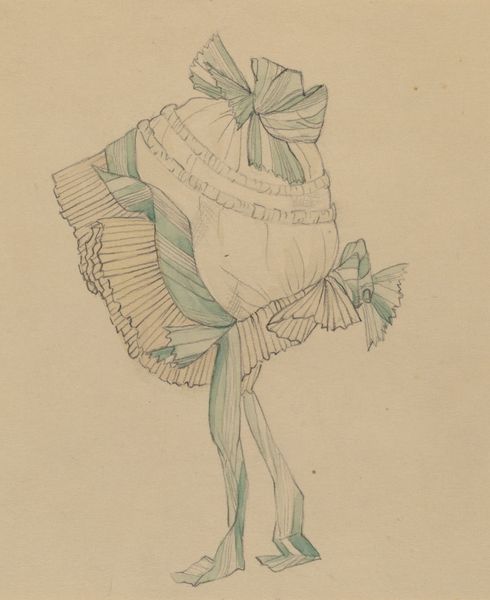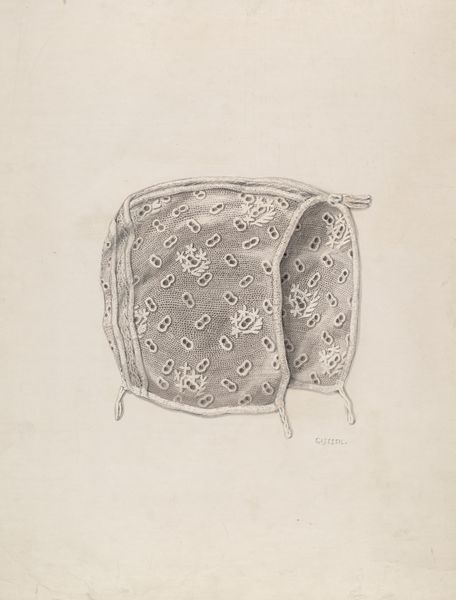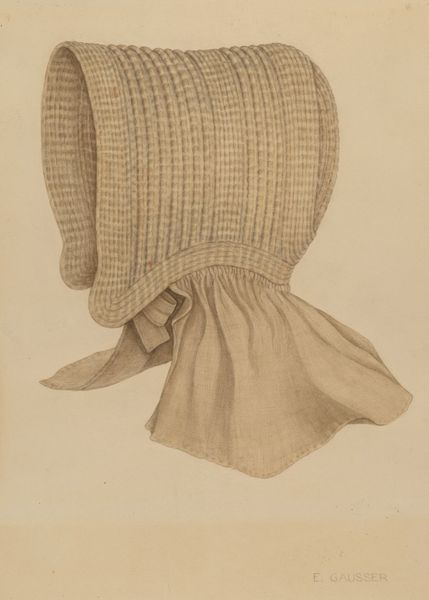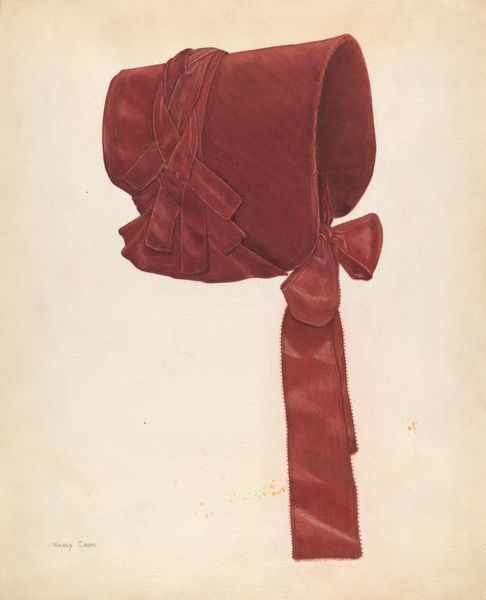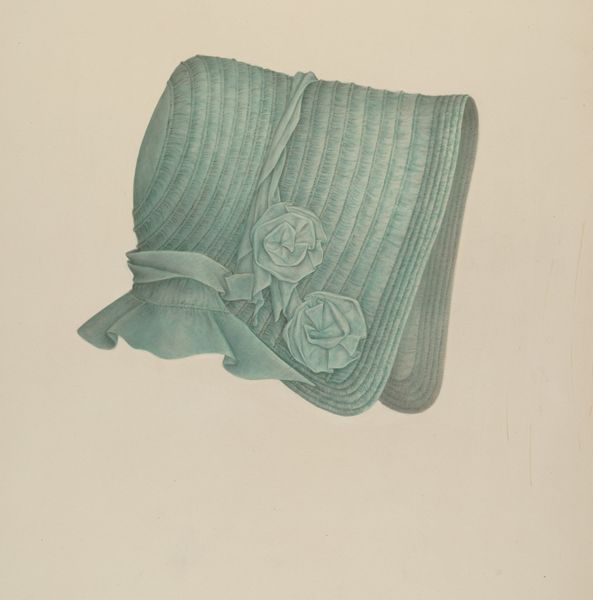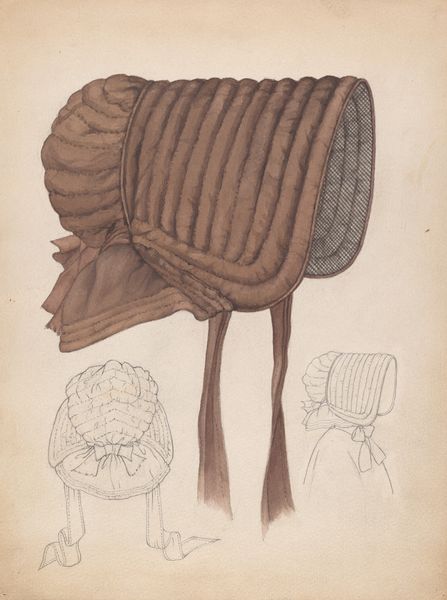
drawing, pencil
#
pencil drawn
#
drawing
#
pencil sketch
#
pencil drawing
#
pencil
#
sketchbook drawing
#
realism
Dimensions: overall: 29.3 x 24.5 cm (11 9/16 x 9 5/8 in.)
Copyright: National Gallery of Art: CC0 1.0
Curator: Here we have Lillian Causey’s drawing, "Bonnet," likely created around 1937. It's a seemingly simple, delicate pencil sketch. Editor: My immediate reaction is how fragile this image feels. The limited tonal range and soft pencil strokes convey a real sense of fleeting beauty. It feels…ghostly. Curator: Indeed, the object itself carries significant weight beyond its aesthetic charm. The bonnet, historically, was far more than mere headwear. It symbolized a woman's role and status within society, marking transitions from girlhood to womanhood and signifying modesty and domesticity. Consider its implications on women and social labor. Editor: That's fascinating. Focusing on materiality, the artist carefully captures the textures – the smooth fabric and the delicate frills, right? The visible pencil strokes remind us that this isn’t some idealised object. This Bonnet may have been something that had been worn and used in labor. We consider how something might degrade during daily use and the implications of that usage. Curator: Precisely, we see how dress shapes experiences of the body as a kind of ‘technology of gender’. Who got to choose this bonnet and to what extent did it offer women’s agency? What were their roles as consumers and what could we know about those things from the labor? Editor: Good question. The monochrome execution draws attention to the craft of drawing itself and emphasizes its purpose. Curator: It becomes a potent artifact ripe for reinterpretation. It challenges us to engage with histories of marginalisation. Editor: Right. This work helps connect with history and consider new connections to modern material processes of making and the cultural assumptions related to them. Curator: Absolutely, reflecting on how sartorial choices are tied to historical power dynamics opens a door for dialogues on women’s place. Editor: For sure. The medium captures the softness of the fabric but, by revealing itself also showcases both use and material change that it faced over time. Curator: The way such unassuming objects can unlock discussions is amazing, isn't it? Editor: I agree. It reminds us to question material conventions that would prevent the production and distribution from being known or that obscure the material from examination.
Comments
No comments
Be the first to comment and join the conversation on the ultimate creative platform.


